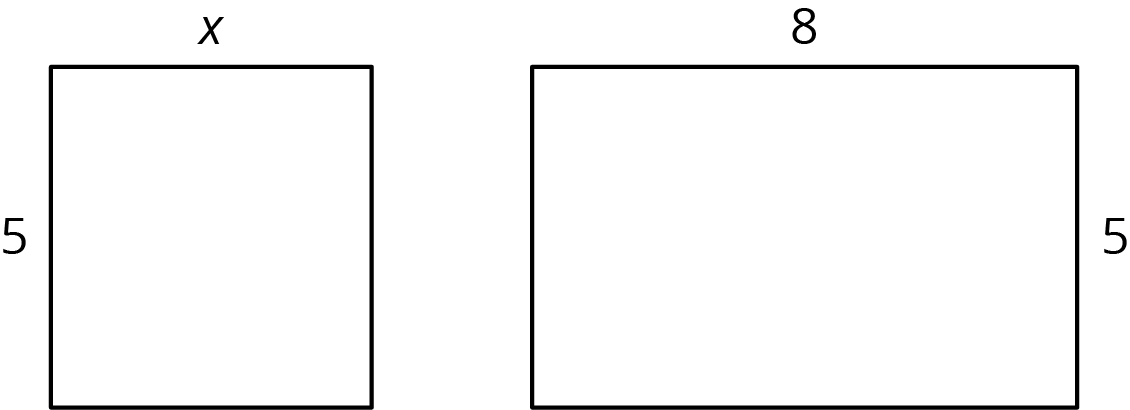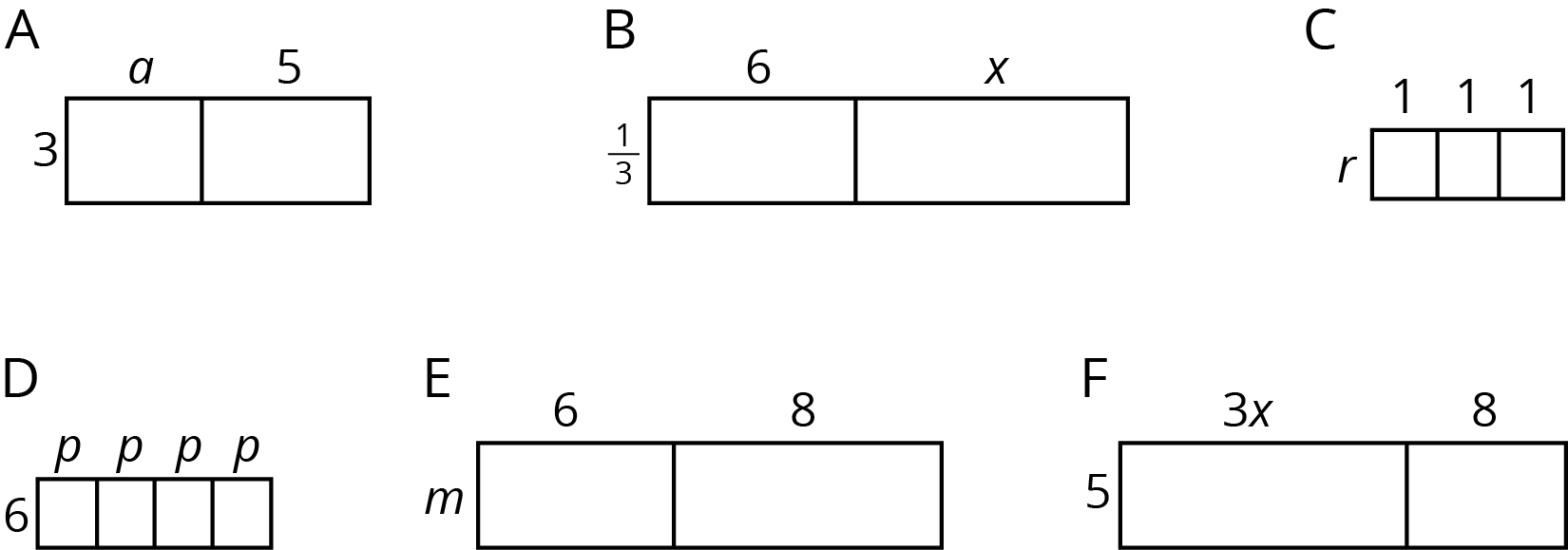Lesson 10
The Distributive Property, Part 2
Let's use rectangles to understand the distributive property with variables.
10.1: Possible Areas
- A rectangle has a width of 4 units and a length of \(m\) units. Write an expression for the area of this rectangle.
-
What is the area of the rectangle if \(m\) is:
3 units?
2.2 units?
\(\frac15\) unit?
- Could the area of this rectangle be 11 square units? Why or why not?
10.2: Partitioned Rectangles When Lengths are Unknown
-
Here are two rectangles. The length and width of one rectangle are 8 and 5. The width of the other rectangle is 5, but its length is unknown so we labeled it \(x\).
Write an expression for the sum of the areas of the two rectangles.

-
The two rectangles can be composed into one larger rectangle as shown.
What are the width and length of the new, large rectangle?

- Write an expression for the total area of the large rectangle as the product of its width and its length.
10.3: Areas of Partitioned Rectangles
For each rectangle, write expressions for the length and width and two expressions for the total area. Record them in the table. Check your expressions in each row with your group and discuss any disagreements.

| rectangle | width | length | area as a product of width times length |
area as a sum of the areas of the smaller rectangles |
|---|---|---|---|---|
|
A |
||||
|
B |
||||
|
C |
||||
|
D |
||||
|
E |
||||
|
F |
Here is an area diagram of a rectangle.

- Find the lengths \(w\), \(x\), \(y\), and \(z\), and the area \(A\). All values are whole numbers.
- Can you find another set of lengths that will work? How many possibilities are there?
Summary
Here is a rectangle composed of two smaller rectangles A and B.

Based on the drawing, we can make several observations about the area of the rectangle:
- One side length of the large rectangle is 3 and the other is \(2+x\), so its area is \(3(2+x)\).
- Since the large rectangle can be decomposed into two smaller rectangles, A and B, with no overlap, the area of the large rectangle is also the sum of the areas of rectangles A and B: \(3(2) + 3(x)\) or \(6+3x\).
- Since both expressions represent the area of the large rectangle, they are equivalent to each other. \(3(2+x)\) is equivalent to \(6 + 3x\).
We can see that multiplying 3 by the sum \(2+x\) is equivalent to multiplying 3 by 2 and then 3 by \(x\) and adding the two products. This relationship is an example of the distributive property.
\(\displaystyle 3(2+x) = 3 \boldcdot 2 + 3 \boldcdot x\)
Video Summary
Glossary Entries
- equivalent expressions
Equivalent expressions are always equal to each other. If the expressions have variables, they are equal whenever the same value is used for the variable in each expression.
For example, \(3x+4x\) is equivalent to \(5x+2x\). No matter what value we use for \(x\), these expressions are always equal. When \(x\) is 3, both expressions equal 21. When \(x\) is 10, both expressions equal 70.
- term
A term is a part of an expression. It can be a single number, a variable, or a number and a variable that are multiplied together. For example, the expression \(5x + 18\) has two terms. The first term is \(5x\) and the second term is 18.